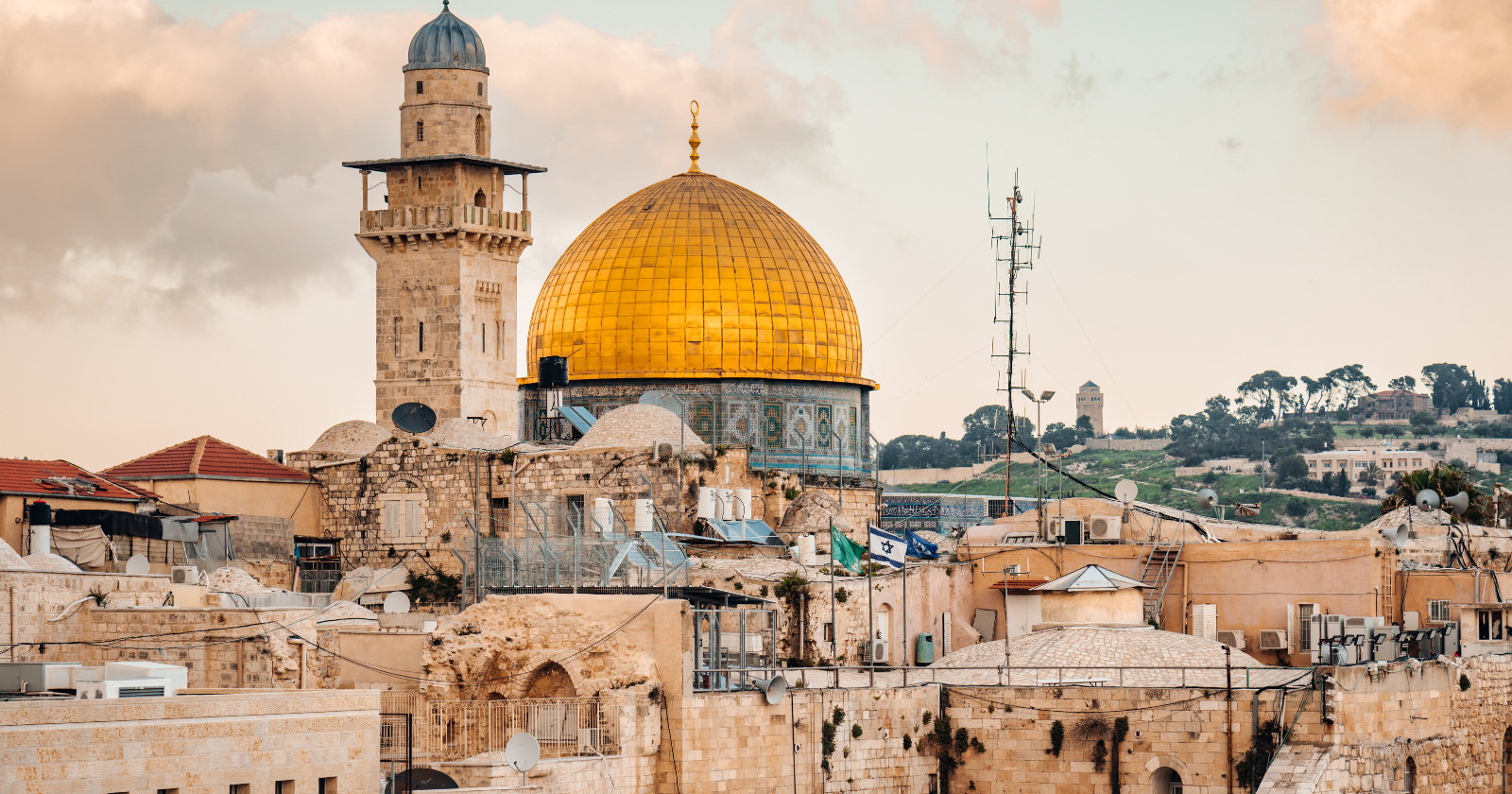In the world we live in today, physical locations mean quite a lot. Their historical existence does, too.
This seems logical.
We’re living in an era of constant digital virtual realities, so it makes sense to appreciate places based on their tangible existence and historical significance rather than just their depiction in texts or online.
Biblical places are among those historical sites that continue to exist today.
These sacred locations, mentioned in the Bible, offer a unique blend of spirituality and history.
In this article, I’ll discuss 8 fascinating biblical locations that have stood the test of time. Let’s shed light on their biblical references, their historical significance, and their present-day existence.
1. Jerusalem: The city of prophets
Jerusalem, the capital of Israel, holds a pivotal place in the Bible.
This city is usually referred to as the “City of Prophets” and it’s linked to many biblical figures and events.
And you know what?
Its spiritual significance transcends Christianity, resonating with Jewish and Islamic traditions as well.
Biblical narratives are woven into Jerusalem’s ancient streets and architecture.
Here are some of the examples from the Bible related to Jerusalem:
- The Western Wall, the last remaining part of the Second Temple, is a revered site of prayer and pilgrimage.
- The Dome of the Rock, believed to be where Abraham prepared to sacrifice his son Isaac, stands as an iconic symbol.
- Then there’s the Church of the Holy Sepulchre, commemorating Jesus Christ’s crucifixion and resurrection.
Each corner of Jerusalem echoes biblical history, making it a living testament to faith and spirituality.
Today’s Jerusalem continues to inspire millions worldwide. Its biblical significance coupled with its vibrant present-day culture makes it an essential stop for any Biblical journey.
2. Bethlehem: Birthplace of Jesus
Bethlehem, another Biblical location that still exists today, holds immense significance as the birthplace of Jesus Christ.
Nestled in the West Bank, this ancient city is vividly described in the New Testament.
Bethlehem in the Bible paints a picture of humble beginnings for the Messiah.
The Church of the Nativity in Bethlehem draws millions of pilgrims each year.
Believed to be the exact location of Jesus’s birth, it is one of the oldest surviving Christian churches in the world. The star-marked grotto within the church is considered sacred, symbolizing divine birth.
What about modern-day Bethlehem?
Well, it has turned into a bustling city with rich cultural traditions and a vibrant community. Its biblical past intertwines with its contemporary life, making it a fascinating blend of antiquity and modernity.
Bethlehem’s enduring presence is a testament to its historical and religious importance. That’s why it continues to captivate believers worldwide.
3. Nazareth: Jesus’s childhood home
As we journey through biblical places still existing today, let’s not forget Nazareth.
This city in modern-day Northern Israel holds deep significance as the childhood home of Jesus. It’s here that he grew into adulthood, learning the craft of carpentry from Joseph.
The New Testament provides glimpses of Nazareth’s humble beginnings, a small village far from Jerusalem’s hustle and bustle.
But it was also here that the Angel Gabriel announced to Mary the birth of the Messiah in the Annunciation.
Believe it or not, you can visit Nazareth even today. Yes, it’s a thriving city, a blend of ancient charm and modern charisma.
The Basilica of the Annunciation, one of Christianity’s most sacred sites, stands tall, commemorating the angelic visit.
Nazareth serves as a reminder that extraordinary destinies often have ordinary beginnings.
Its enduring existence inspires awe and enriches our understanding of the Bible, making it a noteworthy stop for anyone seeking to walk in the footsteps of biblical history.
4. Mount Sinai: Where Moses received the Ten Commandments
Have you ever wondered where Moses received the Ten Commandments?
The answer lies in Mount Sinai — a location deeply ingrained in biblical narratives.
The mountain, also known as Mount Horeb, is traditionally believed to be in the southern part of the Sinai Peninsula.
Biblical accounts depict Mount Sinai as a place of divine revelation. It’s here that God revealed the Ten Commandments to Moses, a pivotal event in biblical history.
This momentous occasion laid the foundation for moral and ethical guidelines followed by believers worldwide.
Today, St. Catherine’s Monastery at the foot of Mount Sinai is a significant pilgrimage site. The rugged mountain terrains echo with profound spiritual resonance, connecting past revelations with present faith.
Quick insight: While the exact location of Mount Sinai remains a subject of debate among historians and theologians, its spiritual significance in the Bible is indisputable.
5. Ephesus: A hub of early Christianity
Imagine walking through the ruins of an ancient city, where the echoes of early Christian teachings still linger in the air.
That’s exactly the experience Ephesus, an ancient city in modern-day Turkey, offers.
As one of the seven churches mentioned in the Book of Revelation, Ephesus played a significant role in the spread of early Christianity.
As I strolled through the remarkably preserved ruins during my visit, I could almost hear the Apostle Paul’s sermons resonating through the Great Theatre.
It’s here that Paul spent two years preaching to early Christian communities.
During my trip to Turkey, I also visited the Temple of Artemis — one of the Seven Wonders of the Ancient World that now lies in ruins. It was a stark reminder of how Paul’s teachings often clashed with local pagan practices.
6. Jordan River: A site of spiritual cleansing
The Jordan River, a significant biblical location, still flows today, bearing witness to numerous biblical events.
This river holds deep spiritual symbolism, particularly in the context of baptism and spiritual cleansing.
The New Testament narrates how John the Baptist baptized Jesus in the Jordan River, marking the beginning of Jesus’s public ministry.
Key biblical events associated with the Jordan River include:
- The Israelites crossed it into the Promised Land
- Elijah and Elisha crossing the river
- Naaman’s healing from leprosy after bathing in it
Therefore, this event is a cornerstone of the Christian faith, symbolizing repentance and renewal.
Not surprisingly, the Jordan River continues to be a significant site for Christian pilgrims. Many come here to renew their faith and partake in baptism ceremonies.
7. Hebron: House of the Patriarchs
The city of Hebron holds a profound reverence for its biblical forefathers and views these ancestral figures as pillars of faith.
It is known as one of the oldest continuously inhabited cities, with its roots dating back to the time of Abraham.
Here’s the key point:
This city is home to the Cave of the Patriarchs, also known as the Cave of Machpelah.
According to biblical accounts, this ancient double tomb is said to contain the remains of Abraham and Sarah, Isaac and Rebecca, Jacob and Leah – key figures who are considered patriarchs and matriarchs within the biblical narrative.
For those seeking historical and religious resonance, connecting with Hebron can provide a sense of awe.
It’s a reminder that we are part of a larger story, a continuum that stretches back through time and continues into the future.
8. Patmos: Island of the Apocalypse
Do you know where the Book of Revelation was written?
It’s the Greek island of Patmos, a place of immense biblical significance. It’s here that John, one of Jesus’s apostles, received visions that he recorded in the final book of the New Testament.
The Cave of the Apocalypse, where John is said to have had his visions, is now a prominent pilgrimage site.
Visitors can stand in the very spot where these prophetic revelations were said to have occurred.
The Monastery of Saint John, sitting high on a hill, is another highlight, a testament to the island’s rich religious heritage.
Patmos invites us to step back in time and immerse ourselves in biblical history. Its tranquil beauty and spiritual significance make it an unforgettable stop on our journey through places mentioned in the Bible that still exist today.
I believe visiting this island would provide a unique perspective on the Bible’s last book and its powerful prophecies.
The significance of biblical places in the present day
The exploration of places mentioned in the Bible often takes us on a journey far beyond geographical and historical boundaries.
One such journey extends into the realm of faith, belief, and spirituality.
These locations, immortalized in biblical narratives, serve not merely as coordinates on a map or remnants of an ancient past.
They are living testament to human faith, standing tall as pillars of our collective spiritual consciousness.
Above all, these places remind us that we are part of a larger story, a continuum that stretches back through time and will continue into the future.








